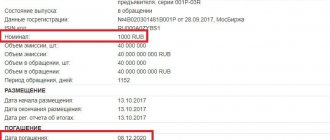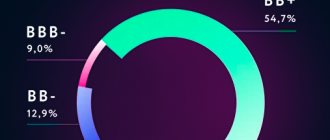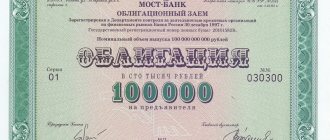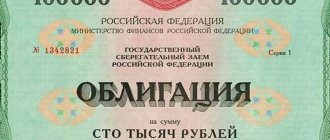Why are Russian Railways securities attractive?
The share capital is owned by the Russian Federation. The value of assets of JSC Russian Railways is over 5 trillion. rubles Investors are attracted by the reliability and good reputation of the holding. Investors' money goes towards development, thereby increasing the profit of each investor.
Advantages of securities:
- Highest rating.
- Regular financial report.
- Timely payment of income.
- Transparent capital structure.
Financial history of Russian Railways
In 2003, the rapid rise of the Russian Railways holding began. Compared to last year, their income increased 15 times.
List of the holding's achievements to date:
- Over 200 thousand cars and 13 thousand locomotives.
- A major taxpayer and employer of the Russian Federation.
- Regularly participates in various international projects.
- It ranks third in the world in terms of transportation volume.
- Consumes at least 7% of the Russian Federation's electricity.
The company's first bonds, issued in 2012, continue to yield more than 9%.
Want to report a bug?
The verifier indicates in the report that rail transport has the least negative impact on the environment compared to other modes of transport. Agree. However, among the projects of Russian Railways for the issuance of green bonds, not only transportation is announced, but - most importantly - the construction and modernization of railway transport infrastructure, including the Central Transport Hub, Moscow Central Diameters, and the Moscow Central Circle. And these are heavy earthly construction projects, not aerial “Swallows”.
In this regard, in the conclusion of the rating agency it would be very useful to refer to external examinations of at least the nearest green projects of a respected issuer. Without this, I read the “statement of independent conclusion” and don’t believe it. Alas, it is methodically unconvincing.
Why did Russian Railways take the path of greening its eternal bonds? The Ministry of Finance would have supported it even without target identification? It looks like they added the topic in a hurry for good PR.
Now the Central Bank needs to determine its view on how green bonds can exist on the market using a parallel metric. And the Moscow Exchange, which also has its own soft standard (listing rules), needs to figure out how to separate hard and light green bonds into different corners. Let's multiply entities!
VEB.RF, which is about to receive the mandate of a national methodological center for green finance, has been developing a model methodology for verifying green financial instruments for several months. For what? I still couldn’t understand. By the time this idea appeared, four rating agencies had already developed good methods for a “second opinion,” that is, an independent assessment of the green quality of bonds. I would agree with the usefulness of the document prepared by VEB if it had been made a couple of years ago, when there were no verification methods on the market. But re-oiling what exists? It’s not a mess... We already have much more appraisers, auditors, certifiers and verifiers - and their methods - than there are issuers of green bonds themselves.
And most importantly, in the entire diverse space of green evaluators, there is the most important player, who should have the last word when it comes to certain qualities of financial instruments - this is the Central Bank. And he recorded his word quite clearly in a special novella on green bonds in the Securities Issue Standards. Only if the requirements recorded there are met, a bond issue can be assigned green status with the corresponding inscription on the title of the registration documents. Anything different from those fixed in the Standards – even if about the environment – is not a green bond. And then bonds “about the environment” should be called in other words. So that you don’t get confused and investors don’t get confused – not only at numerous webinars and conferences, but also when choosing investment objects. And, by the way, the same applies to the distribution of budget subsidies.
Procedure for purchasing Russian Railways securities
A bond is a security that allows its holder to receive profit in the form of interest. The owner is allowed to sell, mortgage or inherit them.
Can an individual buy Russian Railways bonds?
The bonds of this company are freely traded on financial markets. An individual can purchase them for profit or subsequent resale.
On the website of JSC Russian Railways in the section “investors” you can find a list of monetary documents in circulation.
Bonds
They are purchased from licensed brokers. Further transactions in the financial market are carried out through intermediaries who do not bear financial responsibility for the wrong actions of the holder.
Cash documents available in 2021 with a denomination of 1000 rubles:
- 001P-16R - until 2026, 7.9% per annum.
- 001P-15R - until 2027, 8.8%.
- 001P-13R - until 2029, 9.1%.
Eurobonds
Since 2021, Russian Railways Eurobonds have appeared on the markets. Eurobonds outstanding in 2021:
- ISIN XS1843437036 - until 2027, 2.2% per annum.
- ISIN XS1843431690 - until 2026, 7.6%.
- ISIN XS1843442465 - until 2025, 8.8%.
Perpetual bonds of Russian Railways: benefits and risks
The issue of perpetual bonds of Russian Railways, which ended last week, became a notable event on the stock market. The organizers of the placement were VTB Capital, MKB and Sberbank CIB. The duration of each coupon period is 182 days. Let us recall that previously, according to the BCS analyst, there were few players on the market for perpetual bonds of Russian companies. A perpetual (perpetual) bond is a specific instrument of the debt market. It pays coupons periodically, but the value of the bond itself will never be repaid.
“In essence, this is a kind of preferred security for which the coupon is known in advance. Accordingly, the acquirer can count on stable cash flows for an unlimited period of time,” the BCS analyst clarified.
Thus, perpetual bonds are of interest, on the one hand, to passive investors, and on the other, to issuers who require funds for investment purposes. That is why such securities of this type were previously classified as subordinated - that is, securities that could be issued exclusively by credit organizations (banks).
Special conditions of issue
Moreover, according to the requirements of the Central Bank, subordinated issues issued after January 1, 2021 can be distributed only to qualified investors, and the face value of one security must be at least 10 million rubles. However, subords issued earlier than this date are circulated according to the same rules and are available to a wide range of investors.
This explains why amendments to the legislation were required to issue perpetual bonds of Russian Railways. This issuer is not a credit institution, however, it received the opportunity to issue securities actually under subordinated debt (as stated in the prospectus, the company plans to use the funds received to finance the investment program).
So, the issue was carried out under special conditions. Firstly, the nominal value of one security was 1 thousand rubles, which is much less than the Central Bank of Russia's limit for subordinated bonds, but the auction was held by closed subscription.
If the coupon rate on perpetual bonds of Russian banks, as a rule, turned out to be higher than on fixed-term securities (it ranged from 6.95 to 14.5%), then in this case JSC Russian Railways set a kind of record: the coupon rate was only 6.55%. This is good for the issuer.
From a theoretical point of view, such a low amount of debt is evidence of the good liquidity of the security. However, since the terms of the subscription are not disclosed, one has to rely on expert estimates.
The first bond is not lumpy
Judging by the data of banking analysts, JSC Russian Railways was able to attract funds from Russian and foreign banks, pension funds and management companies. Moreover, at the initial stage, the issuer estimated the placement volume at 15 billion rubles. However, during the process of forming the order book, demand exceeded supply. As a result, the company managed to attract twice as much funds as planned - 30 billion rubles.
At the same time, the coupon rate decreased from the target level (6.7–6.8% per annum) several times. And the rate was fixed at 6.55%.
In other words, this amounts to the rate of coupon ruble bonds issued by the Russian Ministry of Finance plus 1.55%.
JSC Russian Railways has only the first issue of such securities. In mid-May 2021 and... O. Prime Minister of the Russian Federation Andrei Belousov signed a decree allowing JSC Russian Railways to place perpetual bonds worth 370 billion rubles. Thus, within the framework of the approved bond program, the company will be able to make several issues, including in foreign currency (within the approved ruble limit).
Railway workers as pioneers
The head of the debt capital markets department, Andrei Solovyov, believes that the railway holding should be considered a successful pioneer that opened the way for other systemically important companies, the expert said.
The fact that it was possible to attract the attention of investors can be explained by the issue being carried out against the backdrop of record low rates on the world market. Therefore, if Russian legislation now allowed individuals to purchase perpetual bonds, then perhaps they would also show a certain demand for such securities.
In addition, a number of other Russian ruble bonds fell in price again last week. This means that the news about the beginning of the recovery of the “coronavirus” drawdown in this sector of the financial market has not yet been confirmed. This cooled forecasts of the potential for price gains that widened z-spreads had indicated. Well, accordingly, the offer from JSC Russian Railways, under these circumstances, looked quite attractive to investors.
It is now difficult to predict how they will behave with further bond issues. At the moment, financial analysts have assessed the closed subscription as successful, although they noted the risks of such investments for investors.
Where does optimism come from?
True, in general, the risks looked paler than the benefits of the purchase. Here three events supported the optimistic mood.
Let us remind you that in accordance with the law, the issuer has the right to unilaterally decide to refuse to pay the coupon on bonds. In this case, it was decided that when JSC Russian Railways makes a decision on non-payment of coupon income on bonds to investors, the Russian Ministry of Finance should provide compensation for lost income. The mechanism for implementing this decision, however, is still in the process of approval.
Secondly, based on the results of 5 months of 2020, income from the core activities of JSC Russian Railways exceeded 744 billion rubles, which is 3% less than for the same period in 2021. However, the railway carrier, even during the most difficult period of measures to combat the coronavirus pandemic, managed to maintain a positive financial result (including through cost savings).
His image when placing a subscription to perpetual bonds was also supported by the news that the list of industries affected by the pandemic expanded to include rail transportation. And this is third.
According to the resolution of the Cabinet of Ministers, which was signed by the Chairman of the Russian Government Mikhail Mishustin, JSC Russian Railways has the right to count on a deferment in the payment of all taxes, except VAT, preferential loans at a rate of 2% for current needs and holidays on payments for rental real estate. By order of the government, such enterprises are also subject to a moratorium on bankruptcy and scheduled and unscheduled inspections. All this taken together should help stabilize the financial budget of the railway carrier.
It remains to add that the analytical credit rating agency assigned the expected credit rating eAA+(RU) to this issue. More than 80% of the total demand came from state banks, and the rest was bought by pension funds and management companies.
According to him, there are currently 34 issues of exchange-traded bonds of Russian Railways in circulation for a total of 583 billion rubles. and 11 issues of classic bonds in the amount of RUB 160.2 billion.
Author: Alexander Solntsev
Bankruptcy auctions, public offerings,
Procedure for registration of participation in the auction, list of participant documents and requirements for registration: To participate in the auction, the applicant must submit to the Organizer of the auction in electronic form an application for participation in the auction, which must contain the following information: name, legal form, location, postal address (for a legal entity) the applicant; last name, first name, patronymic, passport details, information about the place of residence (for an individual) of the applicant; contact phone number, email address of the applicant. The application for participation in the auction must also contain information about the presence or absence of interest of the applicant in relation to the debtor, creditors, bankruptcy trustee and the nature of this interest, information about the participation of the bankruptcy trustee in the applicant’s capital, as well as information about the applicant, a self-regulatory organization of bankruptcy trustees , the member or leader of which is the bankruptcy trustee.
Procedure and criteria for determining the winner of the auction: The winner of the open auction is the bidder who offered the maximum price
Duration and procedure for signing the purchase and sale agreement: The purchase and sale agreement must be concluded within 5 days from the date the winner of the auction receives the offer. Payment must be made within 30 days from the date of signing the agreement to the Debtor's account: rs: 40701810829070000100 Bank: Nizhegorodsky Branch of JSC ALFA-BANK, Nizhny Novgorod, BIK042202824, Ks 30101810200000000824.
Deadlines for payment of the purchase price based on the results of the auction: A deposit in the amount of 20% of the initial sale price of the lot must be transferred to the Debtor's bank account: settlement account: 40701.810.9.2907.0000123 Nizhny Novgorod branch of ALFA-BANK JSC, Nizhny Novgorod, BIK042202824, K/s 30101810200000000824, purpose of payment – “Deposit for participation in auction No.__ for the sale of property of Atlant Investment Company LLC for lot No. ___” as of the date of drawing up the protocol on identifying bidders. The deposit is considered paid from the moment the entire deposit amount is received in the account specified in the information message. The auction organizer returns the deposit within 5 (five) working days from the date of signing the Protocol on the results of the auction in the following cases: - The applicant is not allowed to participate in the auction; — The applicant participated in the auction, but did not win it; — The applicant withdrew his application to participate in the auction before the deadline for accepting applications. In case of cancellation of the auction, the Auction Organizer returns the deposit to the Applicant (Applicants) within 5 (five) working days from the date the auction organizer makes the decision to cancel the auction. The deposit is not subject to return to the Applicant in the following cases: - The Applicant, recognized as the Winner of the auction, evades signing the Sale and Purchase Agreement for the subject of the auction within the prescribed period; — Evasion of the Applicant, recognized as the Winner of the auction, from full payment for the subject of the auction, in accordance with the Protocol on the results of the auction and the Sale and Purchase Agreement for the subject of the auction.










